I’m going to tell you about something that, if you use WordPress, is very visible almost all the time. You might have noticed it, but most people don’t. I’m talking about themes, or what some people call templates.
If you’re a designer, and I asked you to estimate the number of hours you’ve spent looking for the right theme for a website, it’s likely a very high number, maybe even as much time as you’ve spent looking for fonts for each project.
We all have our favorites and those we dislike, themes that have brought us joy, and those that have caused us trouble.
What were the first themes used by WordPress at the beginning? And have they always been around?
A Quick Look at WordPress Theme History
As we know, WordPress officially launched in 2003. However, it wasn’t until 2008 that the Themes Directory was launched, featuring “Classic” and others like “Kubrick”.
The concept of themes existed from the early versions of WordPress. However, if you wanted to find a different one from what you had, you had to search third-party sites and install it manually by uploading files via FTP.
Since there was no centralized directory with oversight from a team, the quality of these themes was sometimes very questionable. Compared to today’s standards, these were elementary designs with very little customization.
How the WordPress Themes Directory Evolved
The directory was welcomed very positively from the start, providing a centralized and secure platform for users to find and download high-quality themes.
The initial selection was very limited, but it quickly grew thanks to the developer community that began to contribute. From the beginning, a theme review system was implemented to ensure quality and security. Automated tools were also introduced to make the review process easier, helping establish standards and improving user experience. But let’s look at this more visually. Let’s go to the numbers.
Unfortunately, the data we have had to be manually extracted from the number shown of themes published in the directory from the beginning to now. Even so, there was a time when this number wasn’t visible, as you’ll see below.
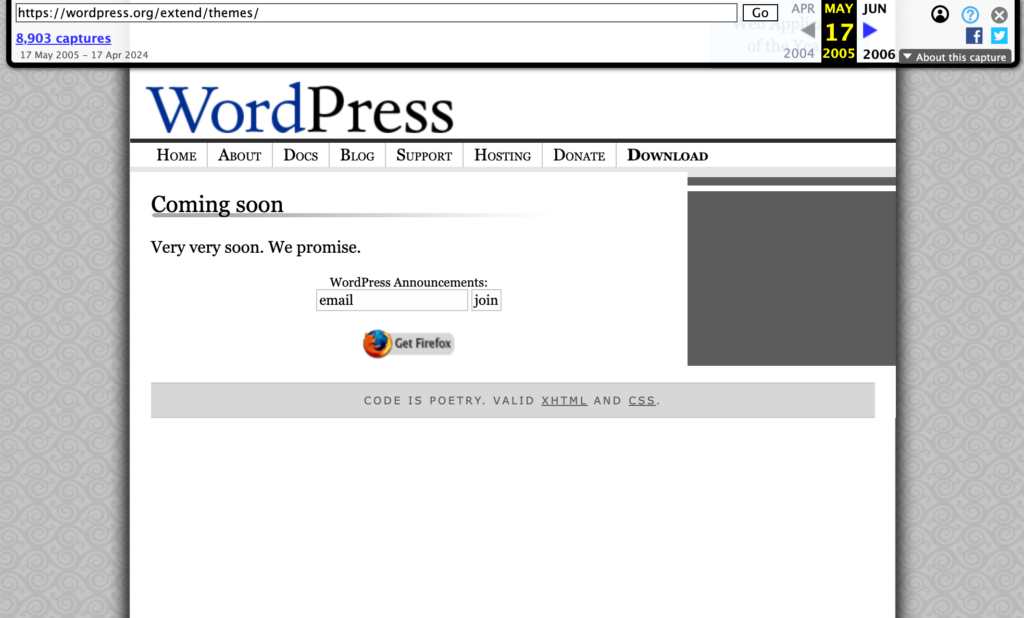
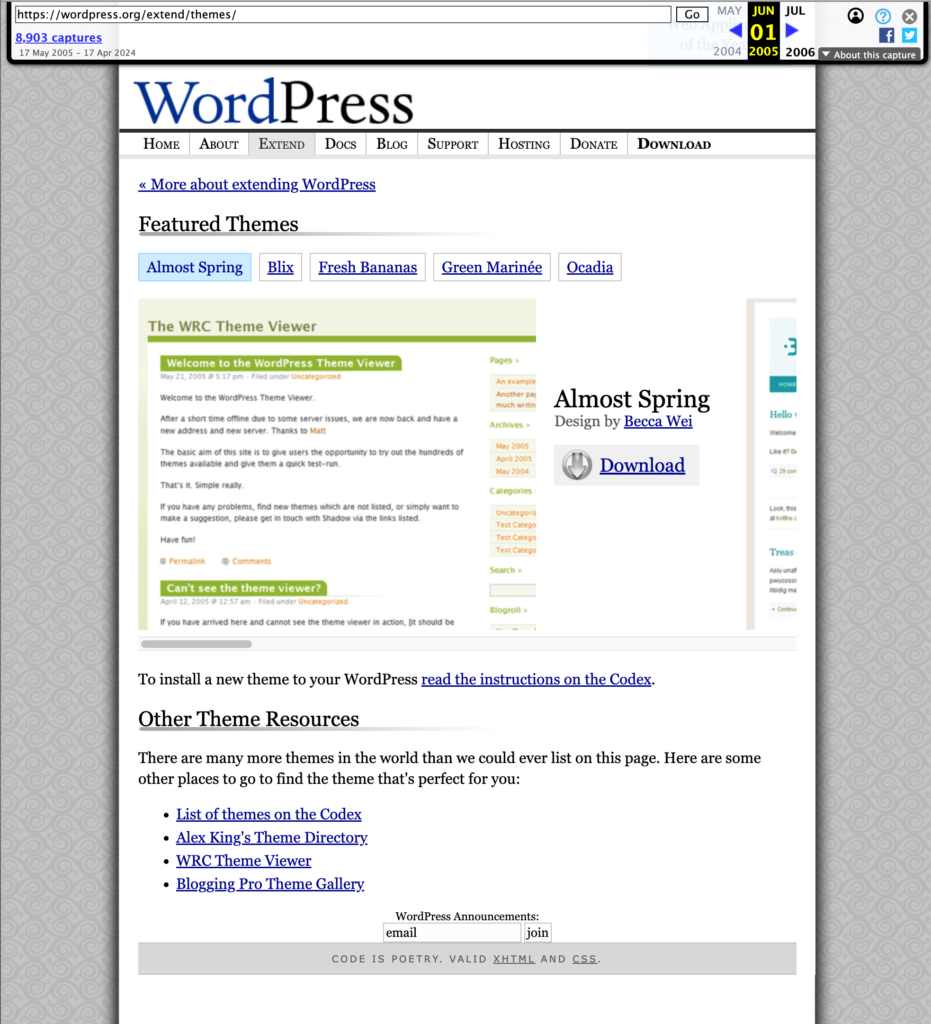
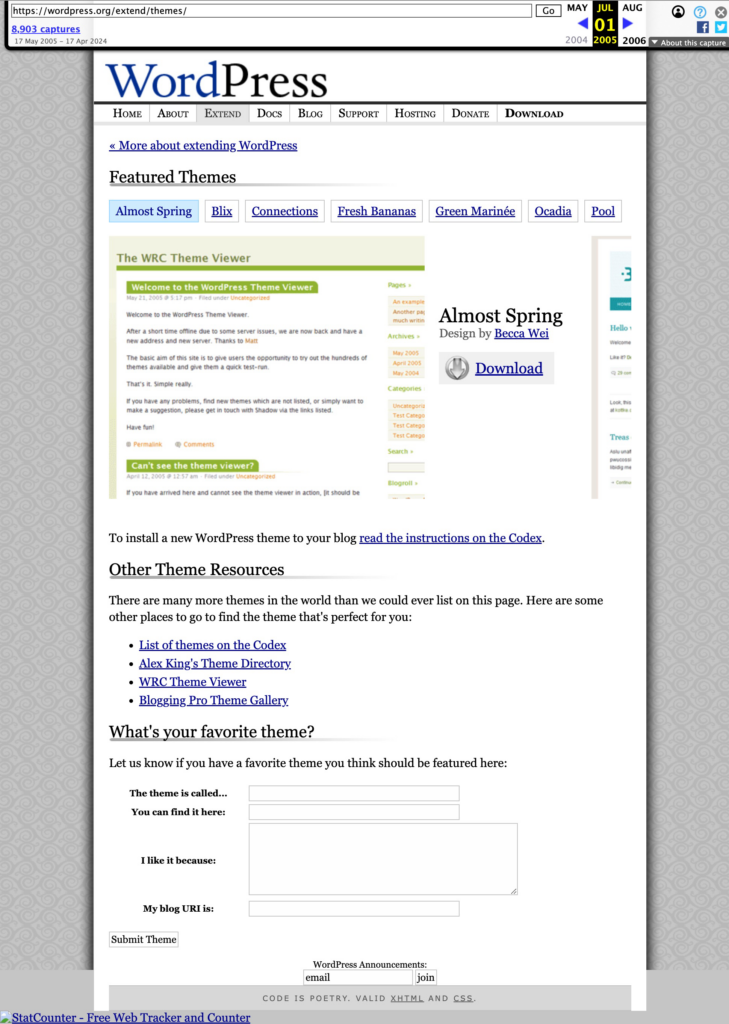
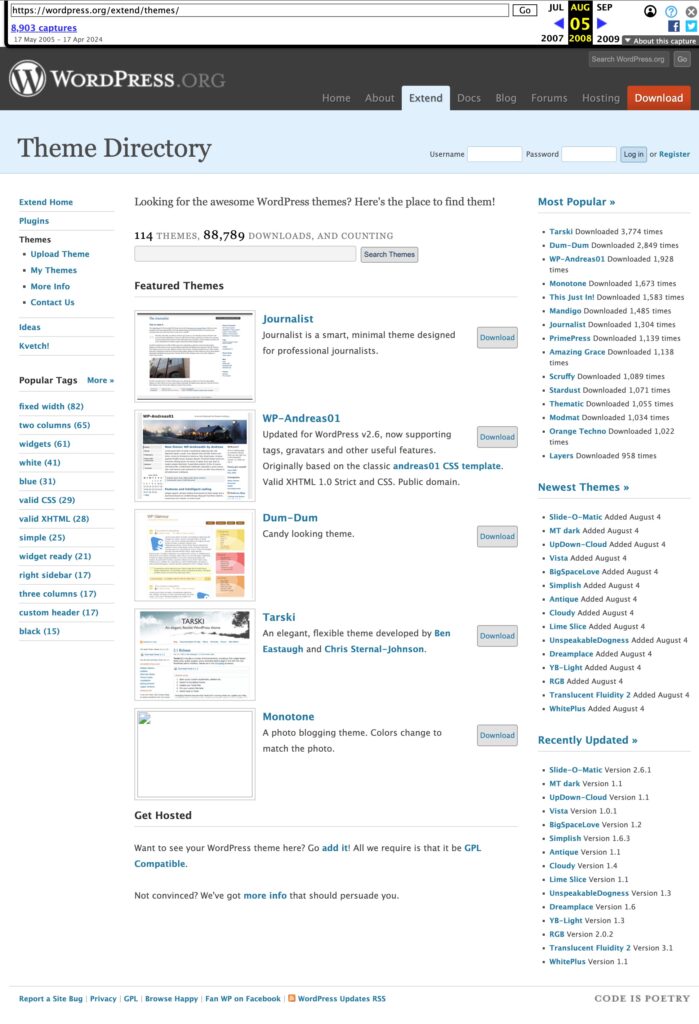


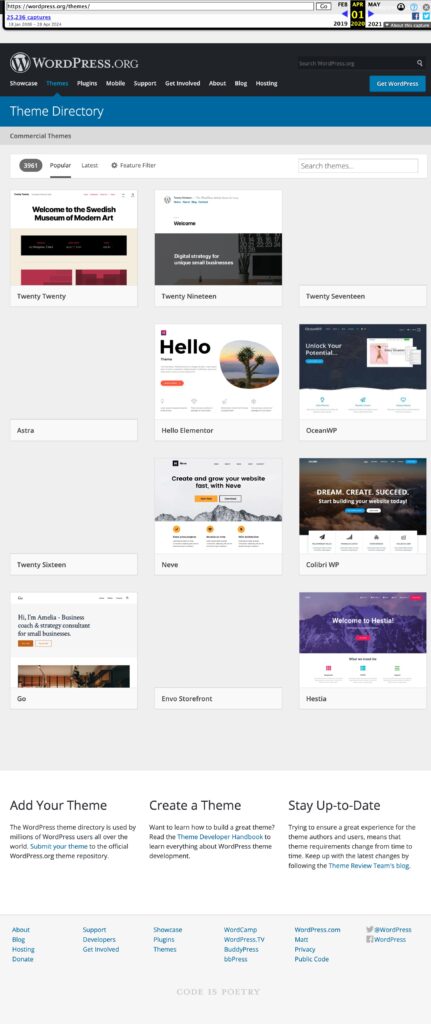
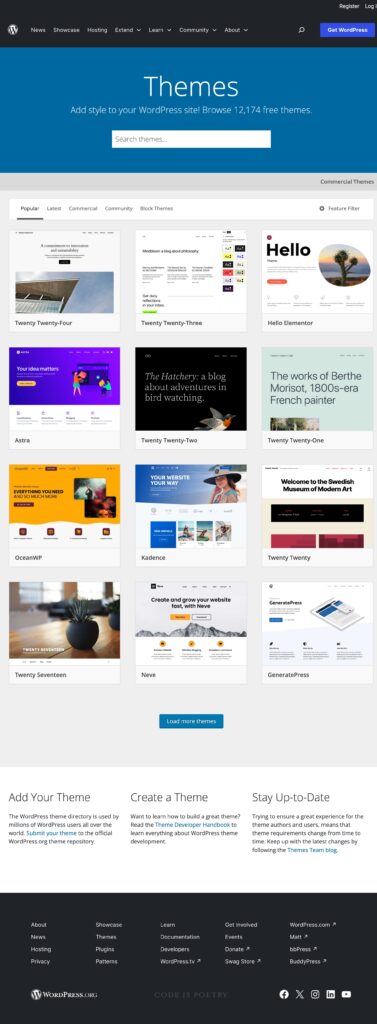
We got this data thanks to the Wayback Machine and the cached snapshots of the directory page month by month from the beginning of its history to now. You can find the data at WPOpenData: Number of themes uploaded.
As you can see, at first, there was strong growth in the number of published themes, with a small drop. From there, growth was very steady until 2014, where it increased significantly.
We don’t know the details of these variations, but we promise to investigate and shed light on this mystery in the future.
Despite the period without data, it’s clear that the growth in the number of themes published in the directory has remained consistent until now. We’ll delve into these early moments further.
What happened during the period without data? It’s simple; someone must have decided that the number of themes published didn’t need to be displayed on the directory page. Thus, for more than four years, this number remained hidden from users.
Between 2020 and 2021, this number reappeared on the web, allowing us to track it again.
In any case, there doesn’t seem to have been significant changes in this growth during the period without data. If you draw a line on the graph, you’ll see that you could connect the points perfectly, and the trend wouldn’t change. It also doesn’t seem that anything special happened during that interval. Perhaps, towards the end of that period, there was a slight increase in the trend of the number of plugins uploaded to the repository.
Notably, in 2020, “Twenty Twenty-One” was launched, the first official block theme for WordPress. This marked a big shift as it was designed to leverage the capabilities of Gutenberg, the block editor introduced in WordPress 5.0 in 2018.
Following “Twenty Twenty-One,” “Twenty Twenty-Two” in 2021 and “Twenty Twenty-Three” in 2022 continued evolving to offer greater integration with the block editor’s features and improve flexibility and customization for users.
But it was in November 2023, with the launch of WordPress 6.4, that “Twenty Twenty-Four” arrived. Undoubtedly, the most complete to date, it was best adapted to what became known as full site editing from the WordPress editor.
Throughout this time, since the release of “Twenty Twenty-One,” both block themes and classic themes have coexisted in the directory. They continue to do so. This could explain the slight increase in the trend of the number of items published in the repository.
What About Downloads?
Again, unfortunately, like with the plugin directory, we have data for only a limited period.

We only have data from 2008 to 2015 on the number of downloads from the directory, as this number was displayed on the website. From 2015 onwards, two years before it happened with the plugin directory, this number stopped being shown. It would have been interesting to know this data during the transition from classic themes to block themes.
In any case, we see a steady and constant trend in the number of downloads, with a very gentle increase in the slope, highlighting the directory’s popularity from the beginning.
In 2012, there appears to be some acceleration in the growth of downloads, probably coinciding with greater adoption of WordPress, although we can’t confirm this with data yet.
By 2015, the number of downloads exceeded 100M, a clear testament to WordPress’s growth as a CMS, witnessed recently.
But we’ll explore this further in the future.
Comparing the Number of Published Themes with the Number of Downloads
What would happen if we compared the number of published themes with the number of downloads? Perhaps this will help us understand some of the things we’ve seen before.
In the following graph, the horizontal axis (X) represents the number of themes available in the directory, which we know increases over time.
The vertical axis (Y) represents the total number of downloads over time.
We have compared both numbers to understand their evolution better.
At first, the number of downloads is relatively low but increases steadily. As the number of available items grows, the number of downloads also grows, but exponentially.
Therefore, we can say there is a clear positive correlation between the number of published themes and downloads, suggesting that the more options, the more downloads, as expected.
But what happens when there are 1000 themes in the directory? We see a marked inflection point that indicates continuous growth, very different from the previous trend. We can assume that there were platform improvements, an increase in WordPress’s popularity, or improvements in WordPress themes.
Currently, we don’t have enough data to confirm this. What we do know is that this happens around late 2009, around October. It’s also possible that a “virtuous cycle” occurred, meaning the more themes published, the more downloads, which could have encouraged more developers to create and upload new themes. In turn, this could have boosted WordPress’s popularity. It makes sense that web creators would prefer a CMS offering more designs and possibilities for creating a website.
Interestingly, this point coincides with the establishment of guidelines and standards for theme construction in 2010. This could have influenced what we’ve just seen. As a result, “Twenty Twenty-Ten” emerged as the first modern default theme.
From 2012 onwards, a new default theme was released annually, aligned with the latest WordPress capabilities and web design best practices.
In 2015, theme review efficiency improved with the implementation of automated tools.
Conclusions
One of the first conclusions from this study is that the themes directory might be one of the most powerful drivers in propelling WordPress into the web world. This is something we’ll analyze and try to confirm in the future when we can cross-reference these data with market data.
In any case, it opens up an exciting perspective and highlights the need to carefully develop themes and the review team to ensure a bright future for WordPress.
This has been a brief history of this directory through its numbers, but we’d love to hear from you. If you’ve been involved in moderating themes or work at a company that creates or designs them, we’d love to hear about your experience. It might help us better understand this story.
Recommended reading: WordPress book.

Leave a Reply